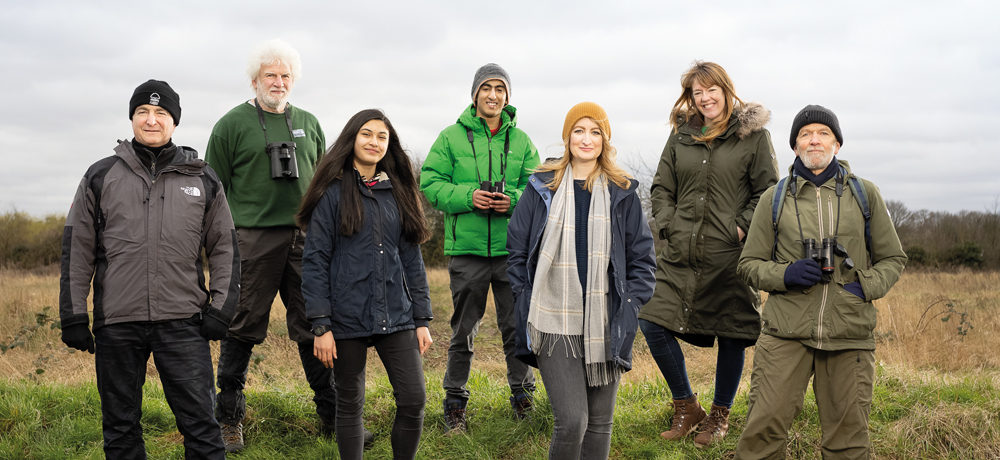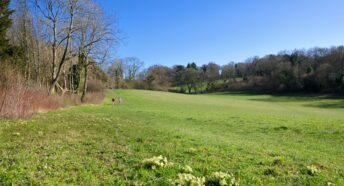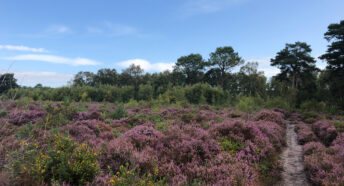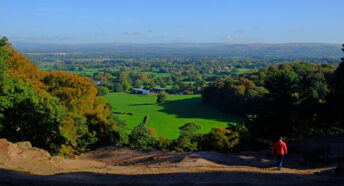Stepping up for green spaces
Meet the campaigners and community groups who have come together to defend their local wild places with creativity, resourcefulness and resilience
Space for nature
Campaigners in west London are calling for an urban wildflower meadow in the borough of Ealing to be protected as an official Local Nature Reserve, with the support of CPRE London.
For nature lover turned campaigner Katie Boyles, it all started while she was walking her dog at Warren Farm, a favourite green space near her home in Hanwell, west London, during lockdown. ‘I bumped into some developers, who told me they were soon going to start putting up buildings and a car park,’ she says. ‘Their ecologist told me not to worry about the rare skylarks that nest here – the builders would give each nest a five-metre radius. Now, that might be okay, legally, but it didn’t sound okay to me, in bird breeding season! I couldn’t stop thinking about it.’
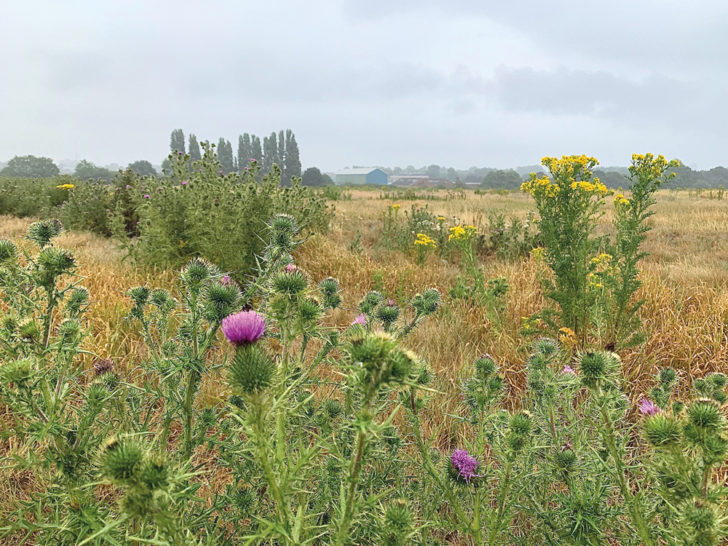
Fast forward to 2022, and Katie is now at the heart of the community campaign to permanently safeguard Warren Farm. This 61-acre expanse of meadow was once, as the name suggests, a working farm; and in more recent times, it was used as a sports ground by local schools, before falling into disrepair and reverting to nature. The land is owned by Ealing Council, which had previously agreed to sell it off for just £1 to Queens Park Rangers Football Club for use as a new training ground. QPR withdrew the proposals in 2020 in the face of local opposition, but new plans are afoot by Southall Football Club to build a stadium on the site.
To help protect the rewilded space against such threats, the Brent River & Canal Society (of which Katie is now a trustee) and the Warren Farm Nature Reserve campaign group are calling for Warren Farm and the surrounding Brent River Park meadows to be designated as a Local Nature Reserve.
‘We only have 2% of our original wildflower meadows left in the UK,’ says Katie. ‘We want to connect this one up with other wild places across the area to create corridors for wildlife, and a permanent green space for the wellbeing of local people.’
Katie has assembled a skilled pool of largely local volunteers and campaigners to support the campaign, including press and campaign officer Steve Toft; wildlife expert Phil Belman and his daughter, young naturalist Aisha; conservationist and wildlife writer Kabir Kaul; environmental engineer Clemmie Shevlin and retired Kew plant expert Peter Edwards.
Team effort
The group’s combined experience on everything from species surveys to media comms has helped grow the evidence base for protecting Warren Farm and raise awareness of it within the wider community. They are also engaging constructively with the council on the day-to-day management of Warren Farm. Old fencing that is hampering wildlife movements is being removed, while signs are going up to inform people about the local nature.
‘I saw on social media that this wonderful grassland habitat, just 20 minutes from where I live, was under threat – so I had to go and visit,’ recalls Kabir. ‘To me, it’s a very special place: somewhere nestled among all the tower blocks of west London, where you can see and hear one of the UK’s most threatened birds, the skylark, on the wing. It’s a bird that brings a lot of hope and joy to me, and many others, and we need to safeguard its future.’
CPRE London has also backed the Warren Farm Nature Reserve campaign, and is calling for it to be designated as part of its ‘Ten New Parks for London’ initiative. Last year, Katie and Kabir joined Alice Roberts, head of green space campaigns at CPRE London, and Caroline Pidgeon, Lib Dem London Assembly member, to deliver a petition of 10,800 signatures in support of an official Warren Farm Nature Reserve to the Mayor of London.
‘It is telling that Warren Farm is already designated Metropolitan Open Land, so it should have the same protections as Green Belt – yet that hasn’t stopped it coming under threat,’ says Alice. ‘Giving it Local Nature Reserve status would help ensure that it is valued and looked after, rather than having no clear identity, which is how it came to be threatened.’
As Alice notes, the team spirit of the Warren Farm campaigners could be key to safeguarding the site in the long term. ‘Gaining protected status is often only the start of the story for green spaces we care about,’ she says. ‘After that, you need active community involvement to ensure they are loved, valued and kept safe for future generations.’
Visit warrenfarmnaturereserve.co.uk to find out more and sign the petition, and cprelondon.org.uk for our campaign to create 10 new London parks.
Local heroes
Leach Grove Wood in Leatherhead is set to become a Local Green Space – great news for community campaigners and CPRE Surrey, who have long championed its future.
Even with strong local support, getting green spaces protected isn’t always easy. The future is now looking brighter, however, for one patch of woodland in Leatherhead, Surrey. ‘For many years, Leach Grove Wood has been a much-loved and used space for local residents of all ages,’ says one of the wood’s long-standing defenders, Flip Cargill. ‘The disabled children at nearby Woodlands School love to visit there. It’s also one of the rare pieces of “green lung” remaining in the area.’
Yet Leach Grove Wood’s popularity with the local community hasn’t stopped it from coming under threat. ‘Residents have been fighting for the wood for at least 30 years,’ notes Flip. ‘Local campaigners previously battled long and hard to prevent the land being sold off by the council for development. Although they won that battle, they were aware that the threat could arise again.’
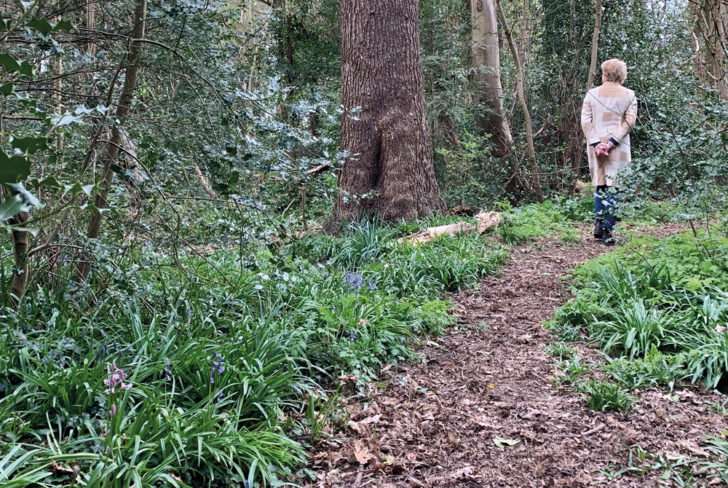
Flip and the local residents’ association, supported by CPRE Surrey, decided to apply for the wood to be designated as a village green, in order to help ward off any future development. Unfortunately, while the county council supported the village green application, the current landowners, NHS Property Services (the wood is adjacent to Leatherhead Hospital) resisted it.
Local Green Spaces
A lengthy legal battle followed, in which another local resident, Tim Jones, stepped up to take on NHS Property Services personally at the Court of Appeal and the Supreme Court. ‘I’ve lived in Leatherhead all my life, 300 metres from Leach Grove Wood,’ explains Tim. ‘I wanted to preserve it for the next generation.’
Kristina Kenworthy, chair of CPRE Surrey, also played a key role in the court case as the instructing solicitor to the barrister, Dr Ashley Bowes. ‘Sadly, the final decision of the Supreme Court held that land owned by a public body (in this case the NHS) for a particular statutory purpose (the provision of medical services) couldn’t be registered as a village green,’ she explains.
All was not lost, however. The long-running campaign had provided ample evidence of Leach Grove Wood’s importance to the local community; something which makes it eligible for another designation, as a Local Green Space (see page 3). LGS designation is a useful tool in the planning system that empowers communities to safeguard green areas that are particularly important locally, giving them similar levels of protection to that of Green Belt.
‘It wasn’t difficult to show Mole Valley District Council that Leach Grove Wood is a valued green space, near to local residents, and fully deserving of Local Green Space status,’ says Kristina. ‘Mole Valley has now designated Leach Grove Wood as an LGS in the draft local plan, which is good news.’
She praises the determination of local campaigners like Flip and Tim, who have put so much time and energy into championing the countryside on their doorstep: ‘They really are local heroes.’
Download our report on the benefits of Local Green Spaces from the Resources section at cpre.org.uk.
Common ground
When Green Belt near Harrogate was threatened by road-building, the local community didn’t just see off the threat – they decided to take action to protect the land for good.
In North Yorkshire, another local community facing development threats has gone to remarkable lengths to protect a much-loved open space; in this case, by clubbing together to buy it!
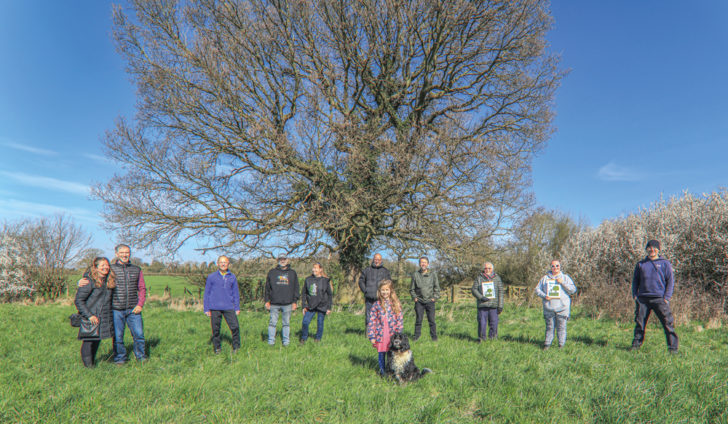
The story began when local people in Harrogate and Knaresborough formed an action group to defend Nidd Gorge – a tranquil expanse of Green Belt with the Nidderdale Greenway cycle route running through it – from the damaging impacts of a proposed relief road.
‘Thankfully, our message was heard and the people of Harrogate and Knaresborough responded in overwhelming numbers to say a loud and clear “no” to the road,’ explains local resident Chris Kitson, founding chair of the community action group. ‘It was truly a community-powered campaign and a demonstration of what can be achieved when people come together around a common issue.’
The group didn’t stop there, however. ‘When we became aware of 30 acres of land being for sale at Long Lands Farm, and the suggestion was made that it would be a good place for a community woodland, I knew it was the next step for us,’ says Chris. ‘Where better to have a new woodland that could contribute to the Northern Forest project – to plant 50 million trees across the North of England – than on the very same Green Belt land that was threatened by the Nidd Gorge road? And how refreshing would it be if the energy mobilised to fight the road could be harnessed in favour of positive change instead?’
By 2020, the group had formed a community benefit society, Long Lands Common Ltd, in order to sell community shares and raise the necessary funds to buy the 30-acre site – smashing their target by the end of the year.
Shared vision
‘At a time when funding was scarce and Covid rife, this amazing community group managed to raise enough money to purchase the land and safeguard it for the future as Long Lands Common community forest,’ comments Jan Arger, chair of CPRE North and East Yorkshire. She recently presented the Long Lands Common campaigners with our group’s inaugural Enterprise Award, recognising an amazing achievement by a local community organisation.
So what’s next for Long Lands Common? ‘We’re now busy putting in ponds and working on a woodland creation plan. We’d also like to look into using some of the area for community agriculture,’ says Chris. ‘A lot of Green Belt land is underused by local people, and we want to change that.
‘We need to make the most of our Green Belt, whether that’s for recreation, wildlife restoration or community-led agricultural projects that will help build a more localised, resilient economy.’
Jan Arger concurs. ‘The importance of just how much local green space means to the community cannot be overstated,’ she adds. ‘The community share the vision and have the passion to ensure that nature still has a place here that people can freely enjoy for years to come.’
Find out more about Long Lands Common at longlandscommon.org.
A version of this article was originally published in CPRE’s award-winning magazine, Countryside Voices. You’ll have Countryside Voices sent to your door three times a year, as well as access to other benefits including discounts on attraction visits and countryside kit from major high street stores when you join as a CPRE member. Join us now.
